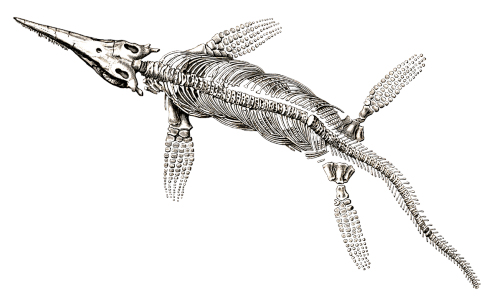Life on Earth will not last forever. Several near life extinction events have happened on Earth in the past. Here they are listed in the order in which they have occurred.
To put everything in context, the Earth is about 4.5 billion years old. Single celled living organisms first appeared between 3.5 and 4 billion years ago. Complex life composed of multicellular organisms first appeared as much as 1.6 billion years ago. Plants first colonized land 515 million years ago. The first member of the genus homo, to which modern humans belong, appeared about 2.8 million years ago.
Ordovician Extinction
About 440 million years ago on Earth, over a nine million year period, three pulses of
high volcanic activity produced very high CO2 levels and ocean acidification.
These pulses alternated with glaciated snowball Earth conditions followed by rapid thawing
and floods.
Loss of life is estimated to have been 85% of all species.
Devonian Extinction
About 359 million years ago, one or more supernova explosions directed enough radiation onto
Earth to eliminate the ozone layer and cause prolonged exposure to ultraviolet radiation,
causing an extinction event. This ended the Devonian period and ushering in the Carboniferous.
The supernova are estimated to have been 65 million light-years away. A supernova within 25
million light-years of Earth can extinguish all life.
Loss of life is estimated to have been 70% of all species.
Permian Extinction "The Great Dying"
About 252 million years ago, extensive volcanic activity in the Siberian Traps caused
carbon dioxide levels in the atmosphere to rise to over 5.8 times what they are today.
This resulted in massive climate change with nearly all life in the oceans dying due to
acidification.
On land, there were some spots of refuge in humid mountain forests where plants and a few
animals continued to thrive.
This was the end of the Permian period and the start of the Triassic.
Loss of life is estimated at 80% of all species.
Triassic-Jurassic Extinction
About 200 million years ago, a series of large scale volcanic eruptions happened over an
18 million year period.
This caused gradual but extensive climate change and altered ocean acidity levels.
Loss of life is estimated at 50% of all species.
Cretaceous Extinction
66 million years ago, a large asteroid hit the Earth and famously wiped out the non-flying
dinosaurs, pterosaurs, plesiosaurs, and many other animal groups.
The angle at which it hit the Earth, plus the location, a shallow seabed next to the Yucatan
peninsula full of sulfur-containing gypsum, made it even more deadly.
The impact spewed vast quantities of vaporized seabed into the upper atmosphere.
If the asteroid had been larger, it could have ended most multicellular life.
If it had struck the middle of the Pacific ocean, there would have been no lasting
significance.
Most plant and animal species did not die immediately. The sulfur compounds and other fine particles in the upper atmosphere reduced sunlight to only 10% of normal during the first year after the impact. Worldwide temperatures plunged to below freezing for years without a significant seasonal letup.

Most living plants did not receive enough sunlight or warmth and died in the first year. Fifty percent of all plant species went extinct. The ones that survived came back from their seed and roots. Of those that survived, many of the flowering plant species already had an unusual genetic adaptation. They were polyploidy, that is, having two or more whole copies of their genome. This made them more adaptable, and able survive a greater range of environmental conditions. Some lichen and fungi species also thrived, living off massive amounts of dead plant material.
As living plants expired in the cold and gloom, the non-flying, plant-eating dinosaurs died of starvation. The non-flying, meat-eating dinosaurs had a temporary feast, then also died as food ran out.
While many birds survived the immediate impact, most bird lineages died. Scientific evidence indicates that body size, behavior, and brain size determined which species survived. Only the smallest-bodied, omnivorous, ground-nesting bird species having the largest brains were able to locate enough food to stay warm and avoid starvation in the first few years. DNA studies show that modern bird species evolved from them. Since birds are one branch of the dinosaur family tree, and today have twice the number of species as mammals, dinosaurs still maintain a significant place on planet earth.
Of mammalian species, the marsupials were dominate during the large dinosaur era, getting in some cases to be as big as a modern badger, and strong enough to take down some dinosaurs more than twice their size. The placental mammals were smaller, resembling rodents, living in underground burrows, and hunting at night for insects and other tiny morsels. After the impact, many marsupial species died off. The placental mammals, having little competition once sunlight returned, expanded in size and variety, eventually taking over most of the world.
Ten years after impact, enough fine particles and sulfur compounds had drifted out of the atmosphere that sunlight and temperatures were nearly back to normal. The impact ended the Cretaceous period and started the Paleogene. Estimated loss of life: 75% of all species.
© 2023-2025 by Topically.org
